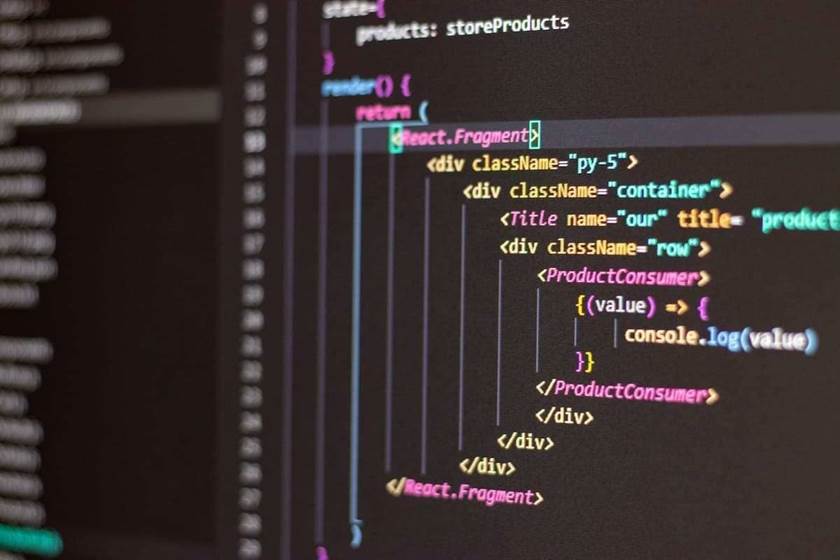Nowadays, most of the technologies and tools leveraged by medical professionals as properly as patients have built-in AI capabilities, curating Artificial Intelligence as the new paradigm in the healthcare environment and health-related interactions. Besides, the big range of AI use cases in telemedicine has grown far past expectations and is poised for future development. Through this evolution, the trade of healthcare has witnessed advantages that enhance the trade requirements additional. Despite the exceptional progress in generative AI, we should remain cautious about their practical utility in healthcare.
Algorithms like CNNs excel at detecting anomalies, tumors, fractures, and other medical conditions, considerably enhancing diagnostic accuracy. For instance, Computer vision in telemedicine can swiftly establish cancerous lesions in mammograms, help in the diagnosis of diabetic retinopathy in retinal scans, and pinpoint regions of concern in radiology images. Through these functions, laptop imaginative and prescient redefines image evaluation, accelerates diagnostic processes and improves patient care. In teleconsultations and digital help Telemedicine Technology for Healthcare Companies, AI is reshaping how healthcare is accessed and delivered. AI chatbots, geared up with advanced algorithms, ship instant responses to patient inquiries, streamline appointment scheduling, and supply general medical information, enhancing the efficiency and accessibility of teleconsultations. Furthermore, AI language translation tools play a pivotal position in breaking down language obstacles, ensuring effective communication between sufferers and healthcare providers, irrespective of their primary language.
- One of essentially the most important benefits of AI in telemedicine is its capability to enhance diagnostic accuracy.
- Many of the pc technologies and digital tools used by clinicians and patients have built-in AI capabilities, making AI commonplace in healthcare settings and health-related interactions.
- AI-powered medical units and wearables can transform distant monitoring by collecting, storing, and transmitting real-time patient health data.
- Using the preliminary knowledge, the AI system prompts a series of questions that mimic the diagnostic strategy of human clinicians, focusing on elements like severity, duration, exacerbating factors and related symptoms.
- In addition to real-time monitoring, AI can be used to foretell affected person outcomes and help with resource allocation.
- By using television, a teleconference was held between general practitioners and psychiatric professionals at a state mental hospital.
In the US, nearly half of the country’s population lives in a mental well being workforce shortage space. The scarcity of behavioural well being professionals is stopping individuals from receiving the care they want. Some teams are disproportionally impacted, including these living in rural areas and minority populations. The blanket of the fearful unknown lined healthcare systems due to the novel coronavirus outbreak. And no one is aware of how long the coronavirus pandemic will final and what measures should be taken to forestall the COVID-19 fast unfold on the earth.
Example: Scientific Assessment And Evaluation
A research published within the journal Nature in 2020[29] discovered that an AI-based telemedicine system was able to outperform radiologists in figuring out breast most cancers in mammograms. Let’s have a look at some of the possible future developments and improvements in AI for telemedicine. The solution have to be designed in such a method that it should define the implementation of AI in the system with its say within the ultimate decision-making. One of an important things to contemplate when using AI and telehealth is selecting a secure telehealth platform and determining its HIPAA compliance. Let’s take a look at some of the challenges and concerns in implementing AI in telemedicine. This way, telemedicine rises from the ashes like a phoenix to be at hand in this attempting time.
Generative AI in healthcare refers again to the application of generative AI methods and models in various aspects of the healthcare industry. It leverages superior algorithms and neural networks to autonomously produce outputs that mimic human creativity and decision-making. Research exhibits AI adoption may cut annual healthcare spending by as a lot as $360 billion. AI can streamline administrative work and scale back claim denials and delays by reviewing diagnoses, medical codes, and other reimbursement information earlier than it’s submitted. In this weblog, we will focus on the functions of AI in telemedicine, its use cases, and its implementation. Contact LITSLINK, an app growth agency, to discover how we apply AI to spice up telemedicine and make products that save the lives of patients around the world.
A single CNN was skilled with an enormous dataset of 129,450 scientific images, covering 2,032 different ailments. Based on the collected results, the CNN showed a sensitivity, or true optimistic price, of ninety seven.1% and a specificity, or true unfavorable price, of 78.8%. In comparison, dermatologists had a lower common sensitivity of ninety.6% and specificity of 71%. It suggests that when integrated with cellular devices, the CNN provides the potential to increase the attain of professional healthcare to rural areas, offering universal entry to essential diagnostic care.
On the other hand, the introduction of AI is on the verge of bringing the fifth industrial revolution. Telemedicine has clearly closed the hole between patients and providers with efficient communication and higher healthcare companies. With artificial intelligence, telehealth can leverage the power of those new technologies to enhance the healthcare trade additional.
By enabling the creation of custom LLM-based purposes tailored to clients’ proprietary healthcare data, ZBrain optimizes telemedicine workflows, guaranteeing operational efficiency and enhanced patient experiences. For example, IBM Watson has been used to research affected person information and advocate personalised care plans, whereas MIT’s Spot robotic has been deployed to remotely measure patients’ vital indicators, minimizing the chance to healthcare staff in the course of the COVID-19 pandemic. Telehealth, also referred to as telemedicine, is the follow of delivering health-related services remotely, usually via digital information and communication applied sciences. It covers varied aspects of patient care, from distant consultations and monitoring to virtual well being training.
Adhering to this method helps healthcare practitioners put together with crucial abilities, from patient interactions to mastering new applied sciences and understanding the complexities of the healthcare techniques. It’s important to determine a strong regulatory framework to guide and set requirements for AI-assisted analysis in the future. This contains addressing key challenges like guaranteeing maximum transparency in AI decision-making processes and tackling issues related to bias and inaccuracies. Like all new advancements, AI-enabled telehealth will go through a crest of excitement and potential, adopted by a trough of disappointment and fear before reaching stability. Along with that, data interoperability must also be thought-about for the AI-powered mannequin to provide accurate results and enhance affected person safety.
The Vital Thing Elements Of Telemedicine
Manual oversight and correction are still deemed to be needed and may proceed to be a necessary choice for much AI-based tele-monitoring no much less than in the near future. Tools like automated charting software can streamline data visualization by routinely extracting, organizing, and presenting info from electronic well being records, laboratory results, and pharmacy information. This reduces documentation time and permits healthcare professionals to devote more time to affected person care. This capacity aids in standardizing data and understanding the whole affected person’s health journey. One profitable evidence of using this expertise in constructing a digital command heart is Johns Hopkins Hospital.

There is no need to go to a medical center and visit your general practitioner by your self. Telemedicine can considerably cut back the risk of an infection, offload healthcare professionals within the time of crisis and assist sufferers with health monitoring. Diagnostic accuracy is a critical consider healthcare, and AI has demonstrated remarkable capabilities on this domain.
Ai And Telemedicine : A Perfect Pair For Modern Healthcare
Given these advantages, 57% of healthcare professionals becoming a member of MIT survey expressed interest in deploying AI-enabled wearables, with more than half already doing so [6]. Telemedicine has emerged as a revolutionary answer to enhance access to healthcare for underserved communities and distant areas. Artificial Intelligence (AI) provides a new dimension to this quickly rising subject by enhancing remote affected person monitoring, session, diagnosis, and workflow optimization [1].

The significance of AI in teleoncology is rising progressively because of its capability to enhance the precision, accuracy, and efficiency of most cancers analysis, therapy planning, and monitoring. Medical data of considerable dimension, together with imaging studies and pathology reviews, could be analyzed by AI algorithms to detect patterns and trends that human clinicians might not readily understand. This might help enhance the accuracy of most cancers prognosis, which is crucial for determining the suitable therapy options. In addition, AI can help in remedy planning by providing personalized recommendations based mostly on the patient’s medical historical past, genetic profile, and remedy response.
Ai In Telemedicine: Integration And Challenges
Education and coaching are essential for the appropriate use of new healthcare technologies similar to AI-enabled telemedicine. Natural Language Processing (NLP) plays an important position in telemedicine by enabling the interpretation and analysis of unstructured text information, in the end bettering communication and affected person care. In telemedicine, NLP is employed for varied important tasks, such as transcribing doctor-patient interactions, extracting useful data from electronic well being data (EHRs), and helping in scientific decision-making.
How organisations can use AI-powered telehealth to cultivate employee wellness – Bizcommunity.com
How organisations can use AI-powered telehealth to cultivate employee wellness.
Posted: Fri, 24 May 2024 09:03:59 GMT [source]
The nature and complexity of conversational agent (or virtual assistant) options can range significantly. For simple duties, which are little more than a message or cue for informing the recipient, an audio voice or visible textual content communication is usually adequate, and also can convey a minimal complexity response similar to a confirmatory acknowledgement. Speech-text conversion utilities and chatbots able to audio or typed inputs and outputs are examples of such applied sciences. They might have highly constrained conversational fashions embedded in them, capable of recognising and developing solely a restricted range of phrases for a prespecified function. These solutions are higher fitted to interactions where the context of the scenario and the person are easy and clearly established. AI mechanisms for these agents are sometimes rule-based utilizing professional techniques or decision tree logical constructs.
Artificial Intelligence In Telemedicine: A Transformational Perspective
AI-powered apps can analyze personal health data, counsel lifestyle changes, and even provide help, a valuable device for continual disease administration and preventive care. For example, analysis reveals sufferers with diabetes had been better in a place to obtain remission using AI expertise than normal care. Natural language processing is quickly progressing on the market, bringing new ways of treating sufferers remotely.

The software of this know-how to the healthcare system has numerous benefits like price reduction, quick processing of affected person information, and much more. Healthcare suppliers express a positive view of AI’s making an impact of their trade, by making it a compelling funding alternative. According to a 2019 report by MIT Technology Review Insights and GE Healthcare, 75% of medical professionals utilizing AI reported enhanced illness therapy predictions.
These technologies reduce the patient’s in-person visits to the clinic and encourage self-care. Looking at the evolution of the healthcare industry, technology has at all times helped healthcare providers in providing better care. AI can streamline various elements of telemedicine and give healthcare providers essential data-driven insights into a person’s well being. Issues associated to data privateness, safety, and the accountable use of AI algorithms want careful consideration.
The most necessary issue is that AI ought to be used as a tool for human beings to achieve the following level-here we now have helpers in areas that are tough or risky or costly for us mankind. So with the proper use of AI we make custom-made helpers to ease our burden in order that we can stay a more significant, purposeful and less stressful life and get the sanity again in our lives. We might help resolve points that our technology is going through all all through the world, beginning with our personal Nation. A. We collaborate globally with top telemedicine organizations, from well being insurers to authorities health ministries. Using the preliminary data, the AI system prompts a sequence of questions that mimic the diagnostic approach of human clinicians, focusing on features like severity, duration, exacerbating factors and related symptoms.
We contemplate the importance, present, and attainable future uses of AI, after which outline the potential opportunities for addressing a few of the system level challenges in implementation. We start by discussing the overall function of AI in telehealth after which we offer some specific eventualities wherein AI can enhance health outcomes and improve stakeholder experience and acceptance. Despite such challenges and considerations, each healthcare providers and know-how specialists count on the use of AI in healthcare to proceed rising. Patients could soon encounter AI-based packages to detect emotions, which could help clinicians present better mental and behavioral health companies.

Virtual triage exemplifies the powerful influence of AI in optimizing triage processes, significantly in emergency eventualities and high-demand healthcare environments. Moreover, Intel’s Health Application Platform permits the seamless exchange of information from remote patient monitoring devices to healthcare providers. This, coupled with AI’s analytical capabilities, offers healthcare professionals with correct, real-time insights into patient health, enabling extra timely and efficient care. AI can be utilized in diagnostics and provide suggestions to healthcare providers primarily based on its evaluation. AI educated with large amounts of knowledge can rapidly analyze the patient’s medical history and signs and recommend higher diagnoses and personalized remedy plans.
Read more about https://www.globalcloudteam.com/ here.
